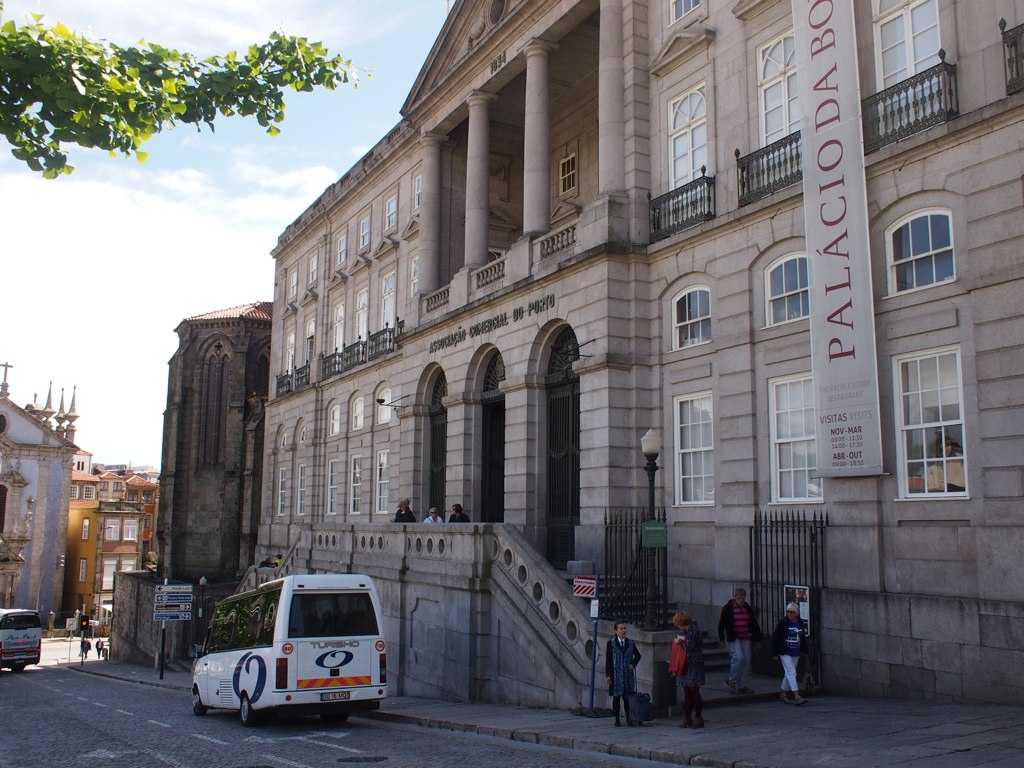The Stock Exchange Palace is a historical building in Porto, Portugal. The palace was built in the 19th century by the city's Commercial Association in Neoclassical style. It is located in the Infante D. Henrique Square in the historical centre of Porto and was designated World Heritage Site by UNESCO.
The palace is located next to the Church of San Francesco, a building in the complex of the convent of San Francesco, founded in the 13th century. On July 24, 1832, during the Portuguese Civil War, a fire destroyed the cloisters of the convent, sparing the church. In 1841, Queen Maria II donated the ruins of the convent to the merchants of the city, who decided to use the site to erect the headquarters of the commercial association.
The works began in 1842 and, although the structure was already complete in 1850, the internal decorations were finished only in 1910, and involved various different artists.
Several rooms of the palace, including the "court room", the "assembly hall" and the "golden room", are adorned with furniture by José Marques da Silva, allegorical paintings by José Maria Veloso Salgado and João Marques de Oliveira, sculptures by Teixeira Lopes and many other artistic works; the library also contains around 10,000 volumes. The main room of the building is the "Araba room", built between 1862 and 1880 by Gonçalves and Sousa. The room is decorated in neo-Moorish style, an exotic style in vogue at that time, and is used for the reception of personalities and heads of state visiting Porto.
The works began in 1842 and, although the structure was already complete in 1850, the internal decorations were finished only in 1910, and involved various different artists.
Several rooms of the palace, including the "court room", the "assembly hall" and the "golden room", are adorned with furniture by José Marques da Silva, allegorical paintings by José Maria Veloso Salgado and João Marques de Oliveira, sculptures by Teixeira Lopes and many other artistic works; the library also contains around 10,000 volumes. The main room of the building is the "Araba room", built between 1862 and 1880 by Gonçalves and Sousa. The room is decorated in neo-Moorish style, an exotic style in vogue at that time, and is used for the reception of personalities and heads of state visiting Porto.
Stock Exchange Palace
R. de Ferreira Borges, 4050-253 Porto, Portugal
Tickets at the door

- Monday:
-
09:00 - 18:30
- Tuesday:
-
09:00 - 18:30
- Wednesday:
-
09:00 - 18:30
- Thursday:
-
09:00 - 18:30
- Friday:
-
09:00 - 18:30
- Saturday:
-
09:00 - 18:30
- Sunday:
-
09:00 - 18:30




